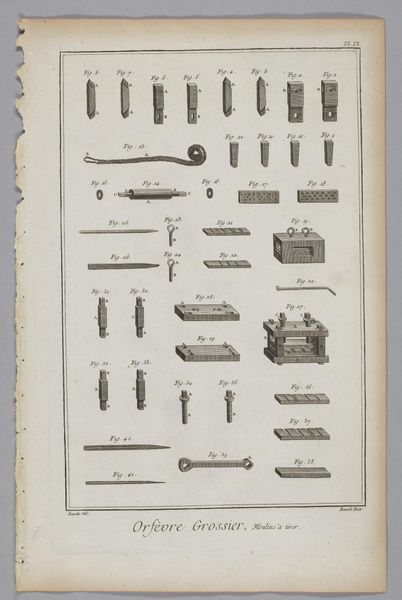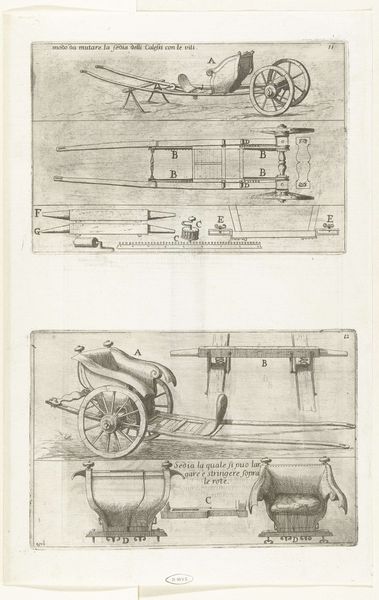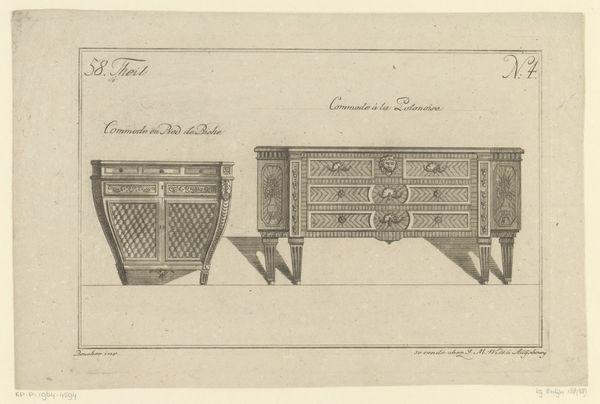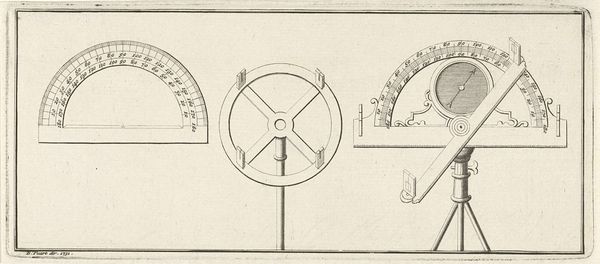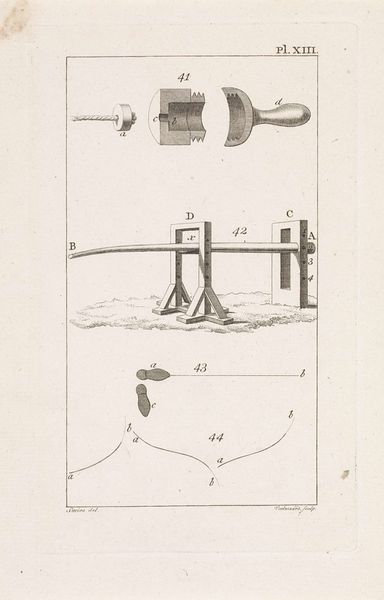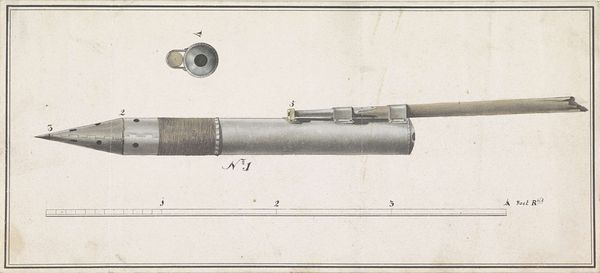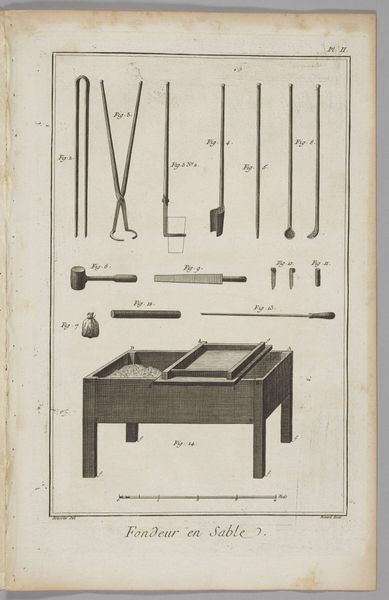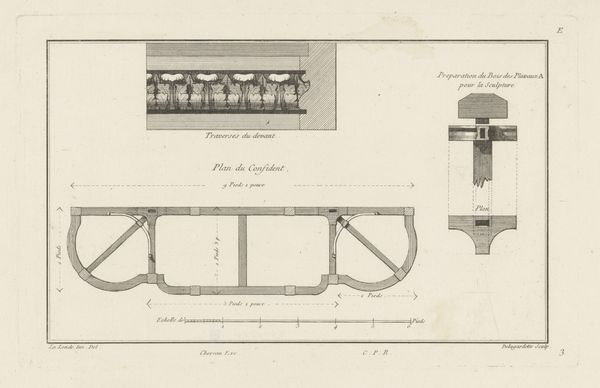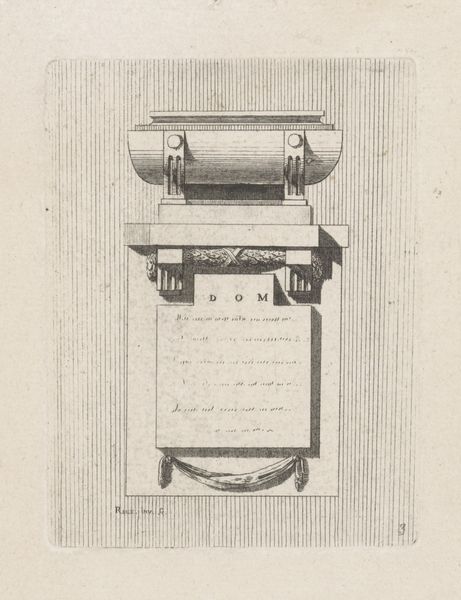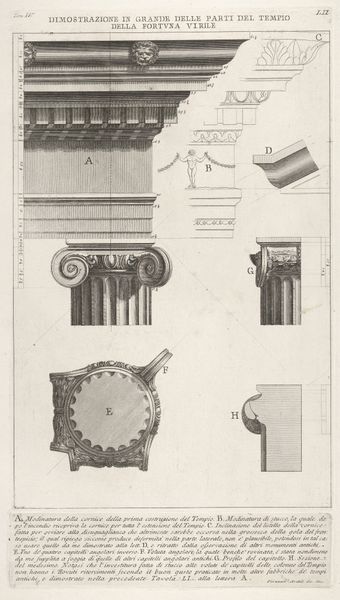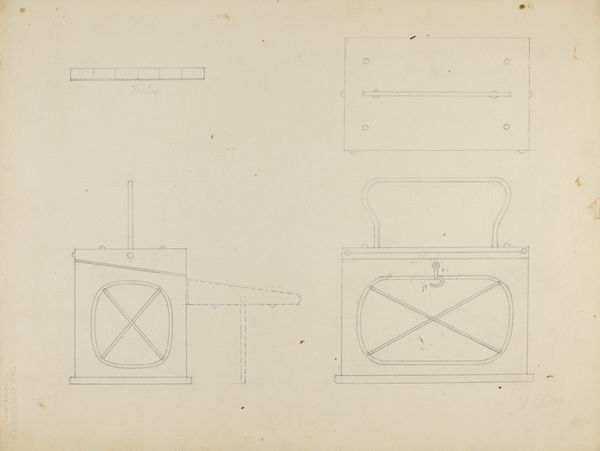
print, engraving
#
neoclacissism
# print
#
geometric
#
line
#
history-painting
#
engraving
Copyright: Rijks Museum: Open Domain
Editor: This etching, titled "Journal des Luxus und der Moden 1786, Band I, T. 34" by Friedrich Justin Bertuch, depicts these beautifully rendered, neoclassical forms of domestic implements: braziers, pokers, bellows. I’m immediately struck by how functional objects can be elevated to this refined aesthetic. What do you see in this piece? Curator: It's intriguing how Bertuch uses these everyday items as symbolic gestures, isn't it? We are encountering more than mere objects. Take, for example, the word "Vulcano" emblazoned across one brazier. It certainly suggests heat, creation, but also destruction—echoing themes present throughout classical mythology. How might the arrangement of tools beneath amplify or perhaps contradict these implications? Editor: I hadn’t considered that connection. The bellows, for instance, appear almost organic next to the geometric precision of the braziers and pokers, maybe adding another layer relating to how raw power can be tamed and harnessed? The tools also feel gendered, perhaps suggesting a masculinized use of fire for household tasks. Curator: Precisely! And consider this, the engraving itself exists as part of a luxury journal. Doesn't that frame the objects and their representations within a sphere of aspiration and perhaps even social competition? Think of the psychological impact of associating these forms with luxury and status. The artist seems acutely aware of this double meaning; these objects gain extra value as signs. Editor: So it becomes more than just a catalogue; it’s almost like a status symbol guide rendered as line art for the aspirational classes. Curator: Indeed. Each precisely rendered line builds layers of meaning; historical context, psychological nuance, societal aspiration, that resonate even now. Editor: I see the symbols at play much clearer now – it’s definitely changed my understanding. It's quite profound how simple objects become loaded with cultural information! Curator: I agree. Everyday items can also reflect cultural memories.
Comments
No comments
Be the first to comment and join the conversation on the ultimate creative platform.

